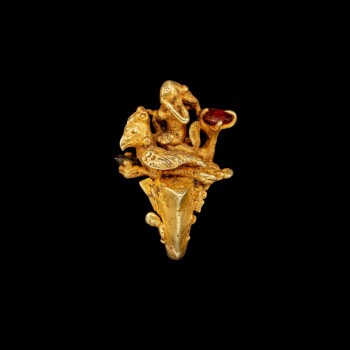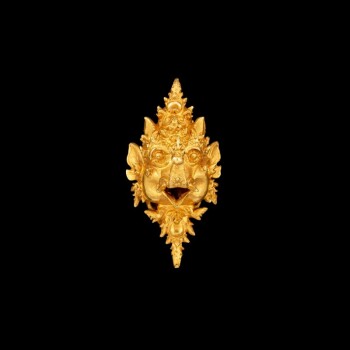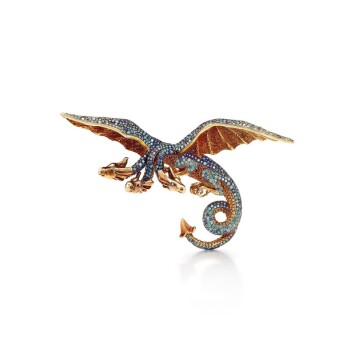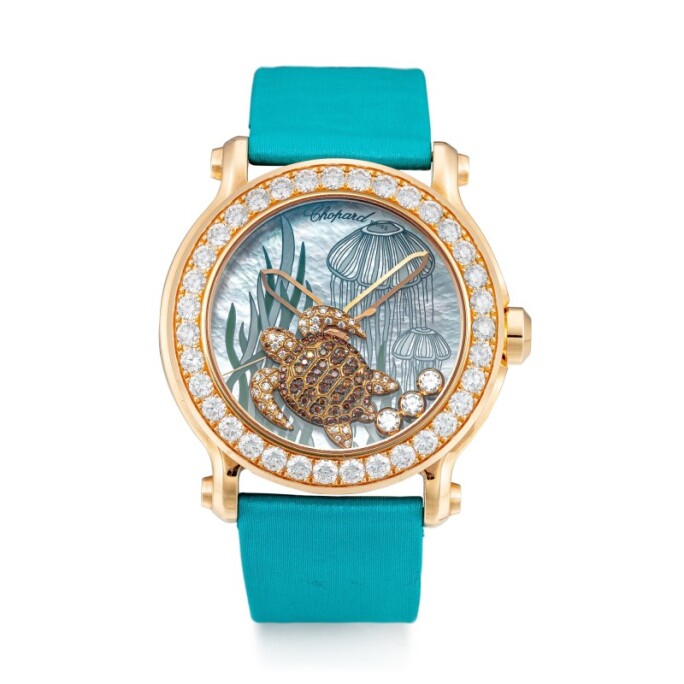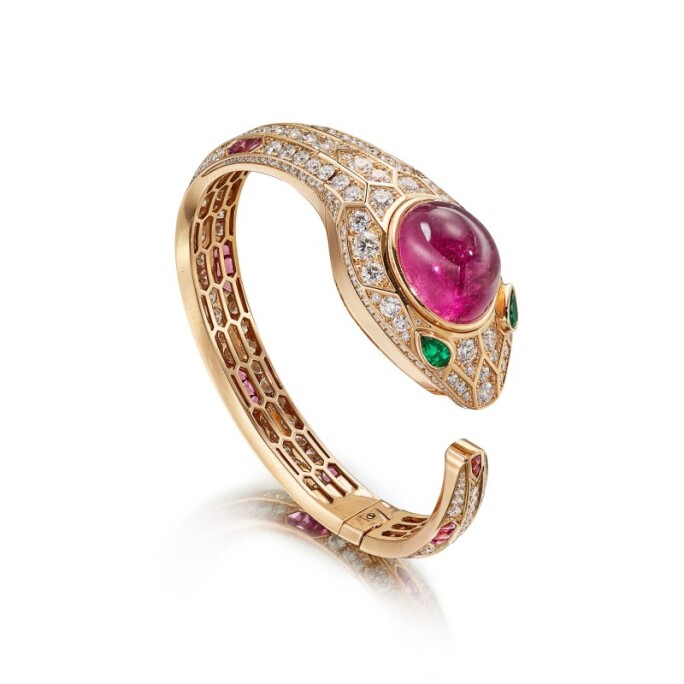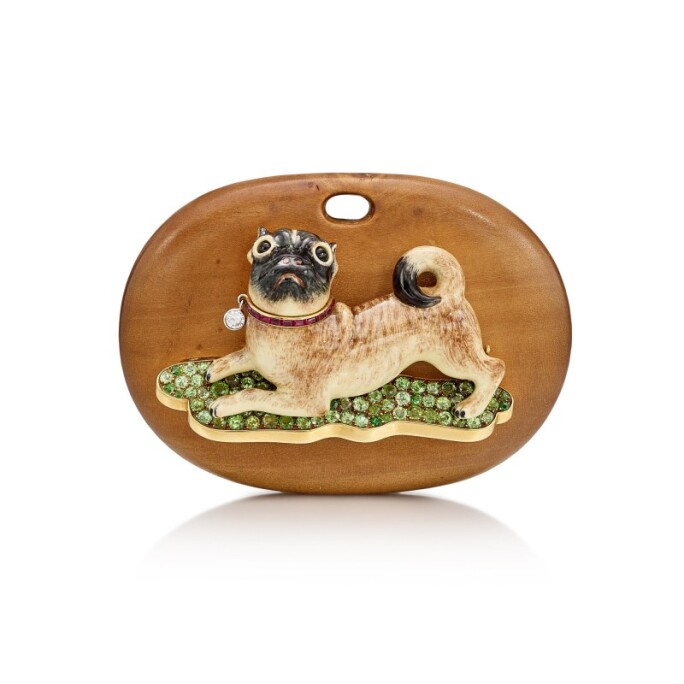F or thousands of years, from ancient gold jewellery to the modern jewels of today, we have sought to capture the beauty of the natural world in our art and adornments. Artisans have turned to animals for inspiration, and found in beautiful stones and rare metals the materials that may contain the mystery of their creation. Our fascination with wild creatures has expressed itself in stories and dreams — as deities and demons, fables and fantasies, loyal companions and wild enemies. These projections shape the way we understand our own natures, gesturing toward our origins and the evolution from nature to culture.
The impulse to assign symbolism to animals is linked to our awareness of what it means to be human, and this understanding connects art and cultures throughout history. Depictions of animals were projections of allegories, aesthetic muses or symbols of creation – reinforcing widely-held mythology or beliefs. These images of animals enable us to understand the relationships of humans and nature, with wild beasts as intermediaries.
“Art is continually haunted by the animal.”
Butterflies
Appreciated for their beauty and mystery, beetles and butterflies are tiny wonders of the natural world. The very possibility of metamorphosis awakens within us a fascination for such reinvention. And yet the flutter of iridescent wings, so delicate and otherworldly, reminds us of its fleeting nature. Psyche is name for word for butterfly in ancient Greek and the creature is associated with the soul – its transformation or ascent from the chrysalis a metaphor for the soul’s departure from the body. The way gemstones catch the light in a moment suggests that same ephemerality. The honeybee similarly reminds us of its extended metaphor to man and mortality.
Birds
The beauty of the peacock, the majesty of a raptor in flight, or the music of a songbird, linger in our imaginations, and have become our projections of love, hope and freedom. Birds have been depicted in jewellery since ancient times, but their popularity had grown during the 19th century along with interest in birdwatching and ornithology in Europe and North America. During World War II, jewellers in Paris embraced the motif of soaring birds, seen as an emblem of resistance set in contrast with the darker global realities of conflict. After the war, they inspired hopes for sustained peace. In times of prosperity, parrots, kingfishers or peacocks would captivate us with their striking plumage, and we might borrow some of that splendour in our jewellery. The peacock is the mount of the lord Karthikeya, Hindu god of war, and has long been a popular design in jewellery not only for its dazzling colours, but also as a symbol of love and the arrival of spring.
Mythical Beasts
Fossils, rocks and minerals all contain the mystery of their creation, hinting to past eras that extend along the scale of geologic time. It is toward this incomprehensible mystery that ancient cultures throughout the ages have conjured mythical creatures to answer what may have existed before us. From three-headed dragon Zmei to immortal bird deity Garuda, depictions of legendary animals are projections of allegories, aesthetic muses or symbols of creation – reinforcing widely-held mythology or folklore.
- Garuda
- Makara
- Zmei
-
 Garuda9th century. A gem-set gold ring of a deity riding on Garuda Possibly Khmer, Angkor period, or Java.
Garuda9th century. A gem-set gold ring of a deity riding on Garuda Possibly Khmer, Angkor period, or Java.
This ring exemplifies the interaction of cultural influences throughout Southeast Asia, depicting the image of a female deity, perhaps Lakshmi or Sita, riding on Garuda.
VIEW LOT -
 Makara13th - 15th century. A gold 'Makara' ear clip East Java, Indonesia.
Makara13th - 15th century. A gold 'Makara' ear clip East Java, Indonesia.
A hybrid figure from Hindu mythology that combines an elephant with a crocodile, the Makara is a symbol of darkness, commonly shown in Javanese temples in the Early Classic period opposite to Kala, the sun element. A gold ear clip from East Java from around the 13th to 15th century depicts this important symbol of the culture.
VIEW LOT -
 ZmeiSapphire Brooch.
ZmeiSapphire Brooch.
Dragons appear as mythical beasts in many cultures and are revered in different ways. This brooch depicts a Russia zmei, a many-headed dragon of Russian folklore and poems. The zmei is often described as having three heads and are known to be fearsome, powerful and fabulous beasts. This brooch depicts a zmei in flight and uses brilliant jewels to create a scale-like texture that contrasts against its golden underwings, and ultimately breathing life into this formidable beast.
VIEW LOT
“What we are trying to define, because the experience is almost lost, is the universal use of animal-signs for charting the experience of the world. Animals were seen in eight out of twelve signs of the zodiac. Among the Greeks, the sign of each of the twelve hours of the day was an animal… The Hindus envisaged the earth being carried on the back of an elephant and the elephant on a tortoise.”
Sea Creatures
In our dreams, the oceans might represent the depths of our unconscious – mysterious, and profound, and life-giving. American filmmaker David Lynch wrote, “Ideas are like fish. If you want to catch little fish, you can stay in the shallow water. But if you want to catch the big fish, you’ve got to go deeper. Down deep, the fish are more powerful and more pure. They’re huge and abstract. And they’re beautiful.”
Fish and other sea creatures, such as seahorses and jellyfish, have come to represent various abstract concepts across many cultures, from rebirth, purification, faith, abundance, harmony, and immortality. From the house of Rene Boivin, we see the fascination with the natural world reflected in their designs, expressed in seashells and other marine motifs. Sea turtles or tortoises are a playful symbol of longevity and bliss. Seashells and starfish have been favoured by many jewellery designers as they evoke the idea of endless summers and the leisurely days by the beach.
Serpents
“Don't forget the serpent... it should be on every finger and all wrists... the serpent is the motif of the hours in jewellery... we cannot see enough of them.”
Snake motifs are perhaps one of the richest and most culturally diverse in iconography. Emerging from the dark recesses of the earth, we imagine that venomous serpents must serve as guardians of the underworld, inhabiting the liminal space between life and death. From the kingdom of Cleopatra to the royal courts of the Javanese empire, snakes have long been venerated as symbols of fertility, sexual desire, immortality, healing, wisdom, nobility, and prosperity. In 1839, Queen Victoria received from Prince Albert an engagement ring shaped as a serpent and set with her birthstone; the design was iconic, a sleek symbol of everlasting love and it began a trend throughout England and Europe.
Exotic Cats
Exotic big cats, especially the panther, have become a recognisable symbol of Cartier beginning in 1913 owing to its charismatic creative director and ultimate tastemaker Jeanne Toussaint. Elegant and mysterious, the exotic jungle cat captured the imaginations of Paris during the Jazz Age, perhaps embodying the very ideal of feminine power and its dangers. Depictions of the lion, on the other hand, have had long associations with the “king of beasts” owing to its noble and powerful form.
Pets
We reserve a special place for pets, as our love for our furry (or scaly) companions belong in a different category than our reverence for wild animals. When the earliest humans crossed the threshold and brought dogs or cats in from the wild, they must in the “taming” process put themselves in the minds of these creatures, forming a powerful and unique bond.
Anyone who has raised an animal knows that profound attachment – the trust and boundless devotion that comes of such companionship, as well as the sorrow from the inevitable loss of a beloved pet. In 1932, American author E.B. White wrote an obituary to his dog Daisy in poignant remembrance of her curiosity and quirks. His words manage to be simultaneously heartwarming and heartbreaking, concluding that “She died sniffing life and enjoying it.” Brooches from Rene Boivin perfectly express that sense of tenderness and affection.
“A really companionable and indispensable dog is an accident of nature. You can’t get it by breeding for it, and you can’t buy it with money. It just happens along.”








